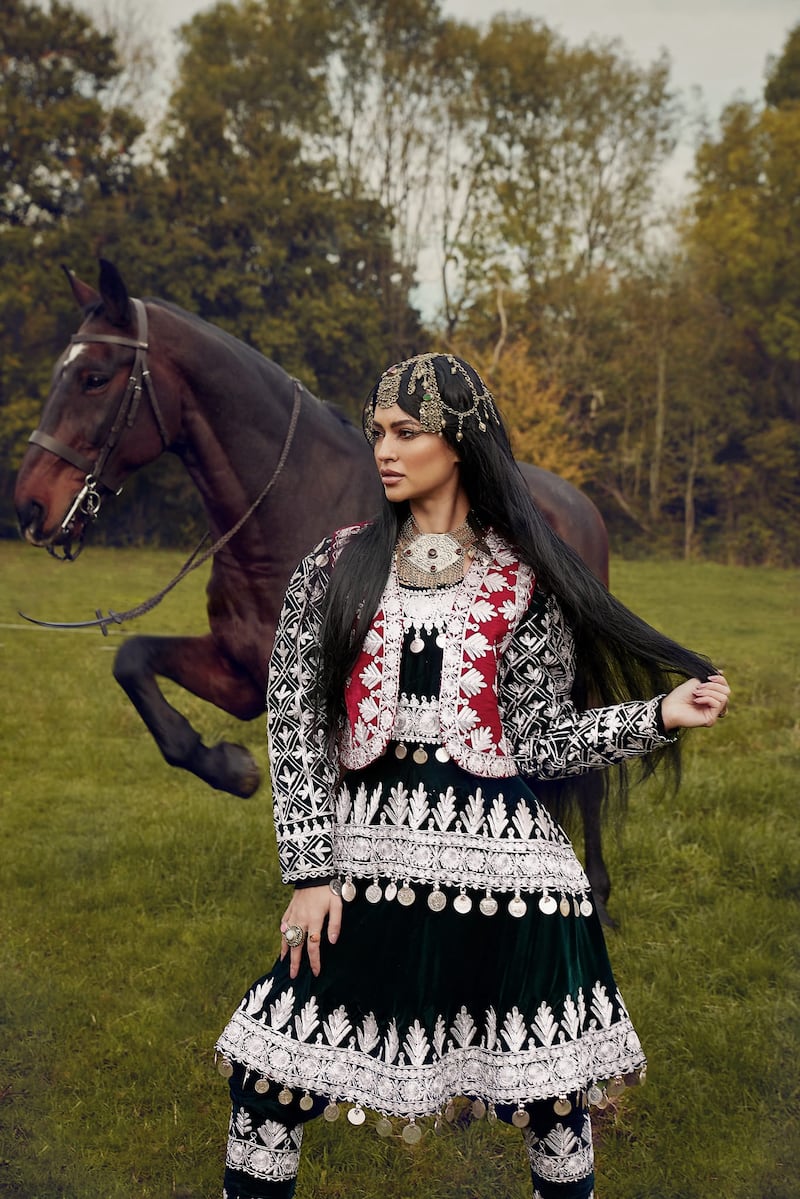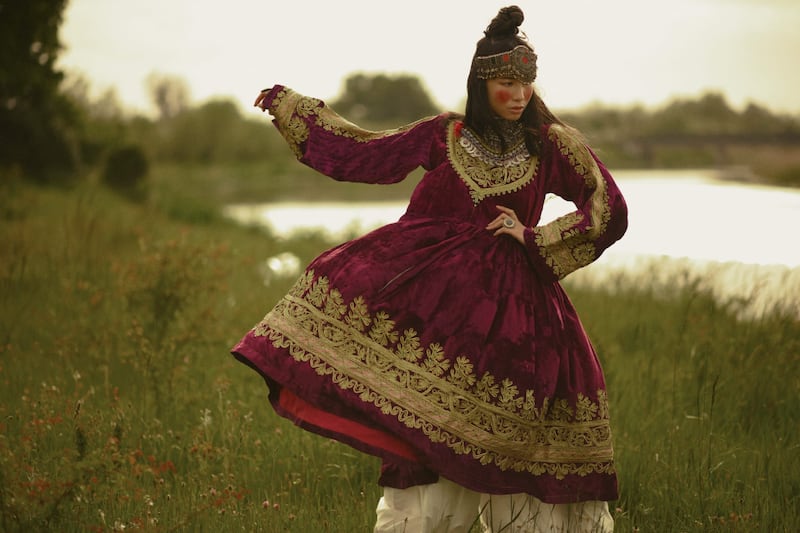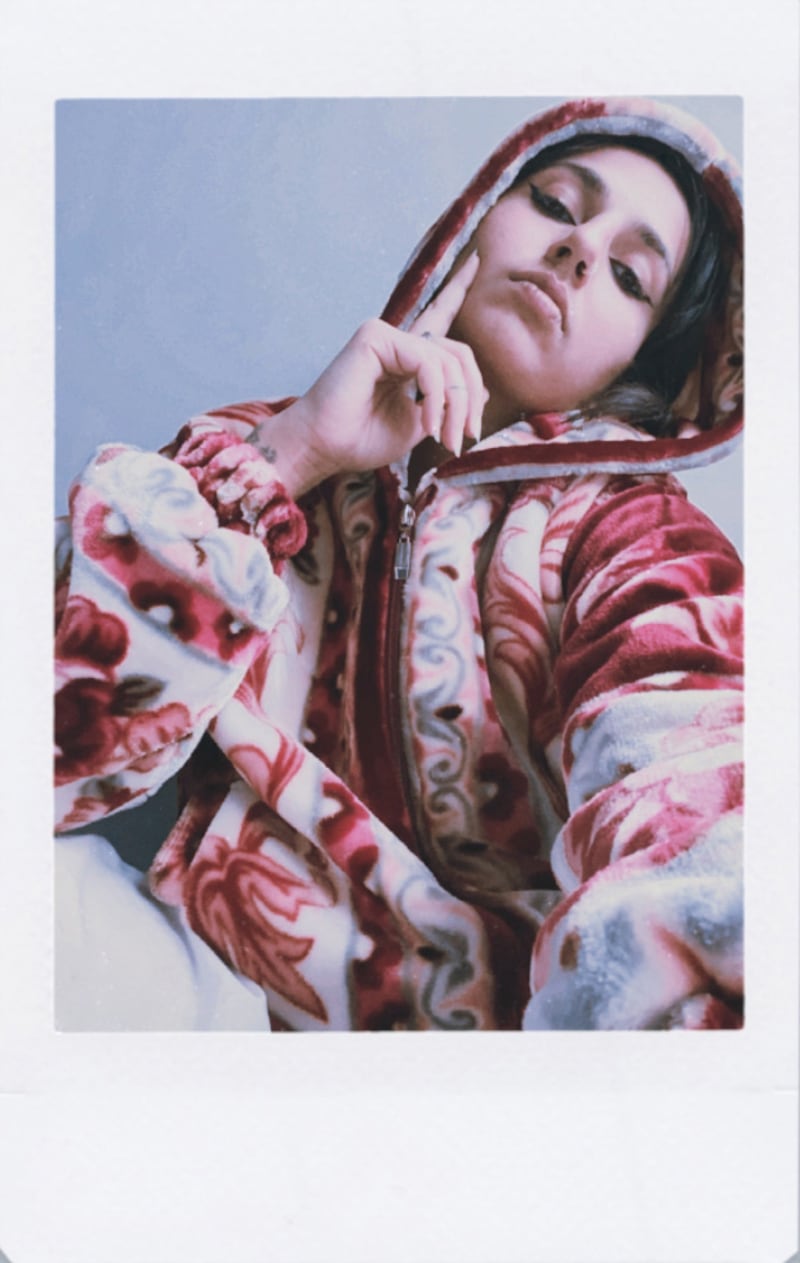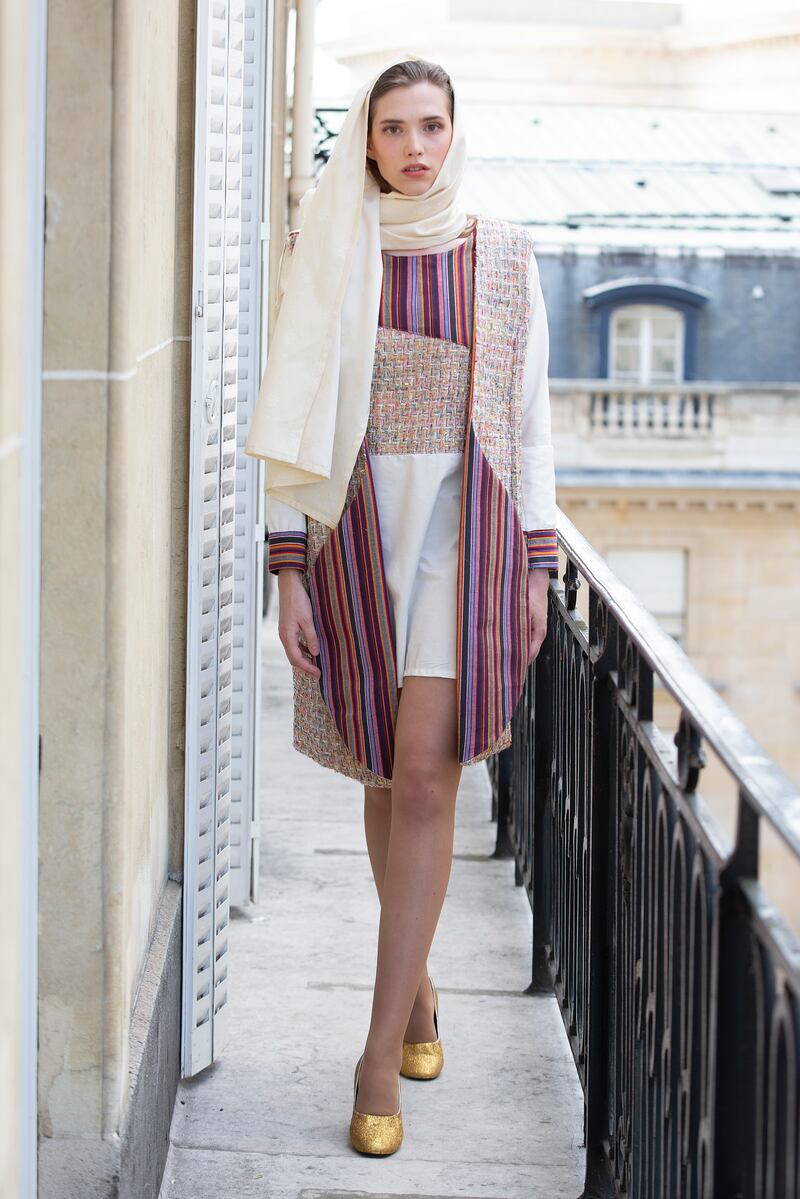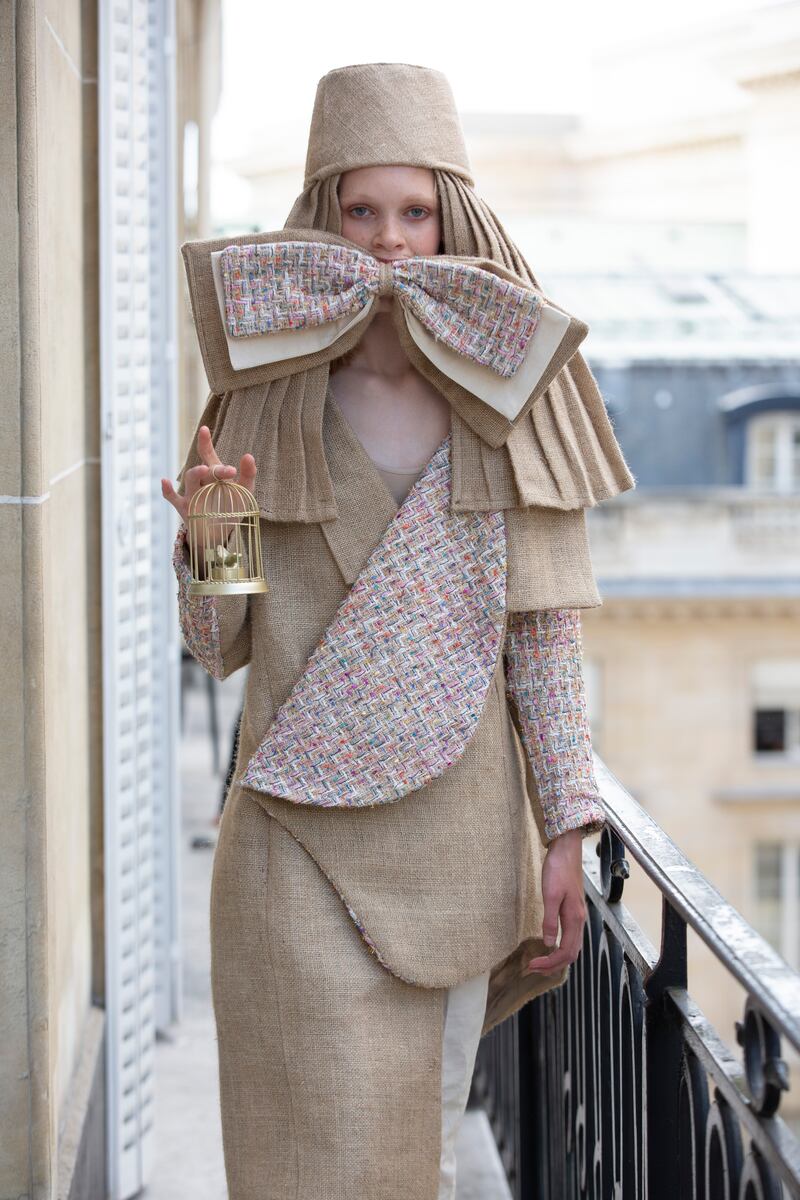Last month, actor Timothee Chalamet unveiled a hoodie he created in collaboration with designer Haider Ackermann that is meant to raise money for the people of Afghanistan, who have been facing massive economic upheaval since the Taliban took over in August.
The stylish actor said he and Ackermann “were horrified to learn of the ongoing humanitarian crisis in Afghanistan” and decided to design the blue-and-white hoodie, with 100 per cent of the proceeds going to a relief organisation in the troubled country that fights to safeguard women’s and children’s rights.
The Dune star’s post was immediately shared across Afghan social media and major fashion publications – Vogue, Paper and W – all picked up the news. But for all the attention these two men are getting, Afghan designers who have for years been working to not only evolve Afghan style, but also make clear, daring political statements about their homeland, are being overlooked.
Shamayel Shalizi, Marina Khan and Naweed Zazai, designers in their twenties and thirties, head three strikingly different brands – Blingistan, Avizeh and Zazai, respectively – but each place Afghanistan, with all its complexities, difficulties and beauty, at the centre of its mission and message.
To these three designers, there is no fashion without politics.
In 2008, after years of living between California and Russia, Shalizi, then aged 14, returned to Kabul. It was there that she says she found herself and, most importantly, her artistic voice. While living in her father’s West Kabul home, she started wandering around the tailor shops and the crowded marketplaces. Along the way, she bought metres and metres of fabric and canvas.
“It opened all these doors for me to try out all these different artistic mediums,” Shalizi tells The National.
She became a compulsive sketcher of clothing designs and jewellery sets, and depicted in her drawings the life she saw around her. She would then have tailors and jewellers – usually older men who were trained in the chunky, ornate and embellished designs of traditional Afghan fashion – make her designs a reality.

When she started Blingistan in 2017, she wanted customers to know the designs were created by an Afghan woman. “I want people to know Afghanistan can be many things, that everything I do is for Afghanistan.”
As such, she has followed the path of a long line of designers such as Alexander McQueen, Demna Gvasalia, Telfar Clemens and Kerby Jean-Raymond, who have never shied away from using their work to make political or societal statements.
If anyone were to doubt that, they’d simply have to scroll through the Blingistan Instagram, with its 14,000 followers, where pictures of merchandise – such as gold hoop earrings with the Dari phrase "Dilem Bicyclem", or "I do what I want", hang from the ears of a long-haired non-binary model – sit beside a screengrab of a statement about Afghan women claiming to be the “first” to do something.
"We Afghan women are quick to sell each other out just for a chance to become the next Malala Yousufzai," she writes in the caption beside the aforementioned post. "Is any contract or news article worth more than our own dignity? Or worth more than the love and respect our country and ancestors deserve?"
Shalizi isn't, of course, the first female Afghan fashion designer.
If Blingistan is the enfant terrible that uses gawdy designs to make overt, in-your-face statements borrowing from the styles of 1980s and '90s-era hip-hop, then Avizeh is the elder stateswoman. Khan's brand comes off as a treatise of highly stylised, refined takes on the ornate traditions of Afghan dress that plays on high-fashion imagery to challenge traditional notions of femininity and beauty.
Like Shalizi, Khan always had an interest in art, drawing and fashion. A psychologist by trade, Khan, 29, fell into design by necessity. She says she had a hard time finding Afghan dresses and jewellery that suited her modern tastes.
“I was a consumer myself, but I could never find anything, so I decided to just make it myself,” she says from her home in Canada, where she grew up.
In 2014, Khan was invited to a family wedding, but found the clothes in Afghan stores dated and lacking in creativity. “Even the new designs at the time were boring and lost, not something young girls would wear."
Because the women in her family always made their own clothes, Khan decided to start creating her own jewellery and posted her designs on Facebook. Her first collection of 20 rings, three necklaces, four cuffs and two headpieces sold out in three days in late 2014.
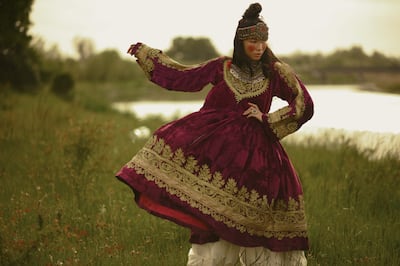
She hasn’t stopped since.
Eventually, she expanded her line to include her takes on traditional Afghan women’s dresses. “I didn’t know where I was taking this, I just knew that I wanted to work on empowering women.
“I wanted to take Afghan art into a new light that tells a very specific story about beauty and fashion.”
Khan is a creative director in every sense of the word, overseeing every aspect of each collection, down to the model castings and storyboarding of concepts for each campaign.
Though the Taliban takeover of Afghanistan increased global interest in brands such as Avizeh, Khan says it shouldn’t take a dramatic societal upheaval for her designs to gain the interest of western editors and buyers.
“I was very angry in the beginning. I was here before all of this,” she says. “Why do you want to talk to me now that everything is lost?"
As part of the global Afghan diaspora, Khan wants to use her work to “promote a culture” that she says has been lost through the decades of war and the displacement caused by the ongoing conflict in her country. As such, it is very important for her to work with artisans in Afghanistan to help her vision come to life.
Yet, sometimes that reliance on the talents of mostly older men can be difficult. In the beginning, Khan says she was simply a “22-year-old girl bossing around older Afghan men”.
Over time, however, as the brand has grown in popularity, the bonds between designer and makers have strengthened. “They are the most well-mannered men. They treat me like their younger sister.”
Both Khan and Shalizi, who was in Uzbekistan at the time of our interview, had plans to return to Afghanistan this year, but the August arrival of the Taliban has made maintaining the financial and artistic ties to the country much more difficult.
While she insists she is “not pro-Taliban by any means”, Shalizi has sat down with low-level Taliban fighters whom she had come into contact with. She says those sit-downs, simple conversations, taught her a lot about their 20-year insurgency against western occupation.
“They are lost too," she says. "They are like a lot of people in Afghanistan, they never had a real childhood. They were told things and brainwashed."
Shalizi uses the pictures of a stylish young Taliban fighter that went viral shortly after the August 15 takeover as an example of the dormant Afghan creativity she wants the world to see. “Seeing that image, it just showed that beyond all that exterior, there is a person there, someone who took the time to pick out his clothes and put all those things together.”
Globally speaking, in mainstream fashion, Khan and Shalizi's status as female designers is a rarity. Women make up the majority of fashion and retail employees, and up to 80 per cent of all fashion purchasing decisions – as much as $15 trillion globally. However, only 12.5 per cent of fashion chief executives are women, with only 26 per cent on boards. Because of this, Khan takes particular pride in seeing “Afghan women leading the charge” in her home country, although there are no official statistics on the number of women involved in fashion in Afghanistan.
One man who is involved in the industry, however, is Zazai, who in 2015 travelled between his native Paktia province and Kabul before heading to the Netherlands and starting his own eponymous fashion line. The brand is named after the storied Pashtun tribe known for their rebellions against British imperialists and an oppressive Afghan monarchy.
Using his tribal name did not come without its dangers, as he says members of his tribe in Paktia, including Taliban fighters, have advised him to change the brand’s name, but he's refused. “What’s important to me is the message, and for people to see it.”

From the start, Zazai, 28, wanted to take Afghan styles and mix them with high fashion, so he put a man in leggings and reimagined the traditional longi turban, tunics and pato, shawls worn by Afghan men across the country.
Zazai knows his collections may never win mainstream support in Afghanistan, “not even in another 20 years”, but to him, art is more about the message than commerce.
“I have a steady life. I just want to be able to challenge people and make them think,” he says.
Unlike Shalizi and Khan, Zazai has no interest in being a commercial designer, instead wanting to use his work to make statements.
“I like extremes. I like a message. These things don’t usually go with commercial designs."


